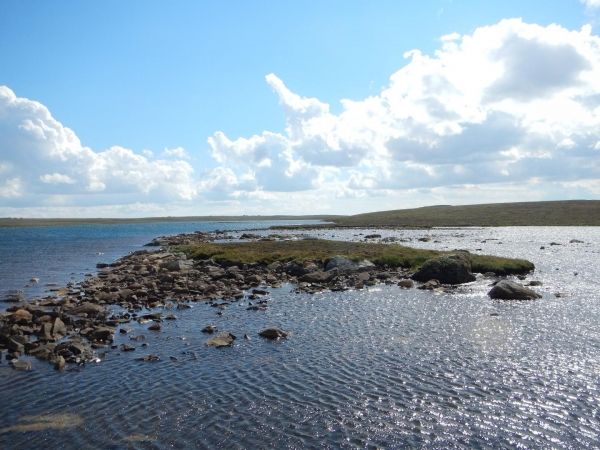To arrive at Nunavut, turn left at the Dakotas and head north. You can’t miss it—the vast tundra territory covers almost a million square miles of northern Canada. Relatively few people call this lake-scattered landscape home, but the region plays a crucial role in understanding global climate change.
New research from Soren Brothers, assistant professor Utah State University Department of Watershed Sciences and Ecology Center, details how lakes in Nunavut could have a big impact on carbon dioxide levels in the atmosphere, and it’s not all bad news—at least for now. Brothers examined 23 years of data from lakes near Rankin Inlet. He noted a peculiarity—as the lakes warmed, their carbon dioxide concentrations fell. Most lakes are natural sources of carbon dioxide, but these lakes were now mostly near equilibrium with the atmosphere.
This was odd. The expected pattern is that warmer temperatures should trigger larger releases of greenhouse gases from lakes. In places like Alaska, centuries of accumulated plant material in the permafrost release a hoard of carbon as they thaw, and are consumed by microbes. Experiments have also shown that as waters warm, carbon dioxide production by microbes increases more quickly than carbon dioxide uptake by plants, throwing the system out of balance.
Together, these processes should increase atmospheric greenhouse gas emissions from waterways, in theory anyway. So why not in Nunavut? There is no question that the first step in this Rube Goldberg machine is engaged … the climate is warming. Why then, are the lakes near Rankin Inlet not belching out carbon?
Read more at S.J. & Jessie E. Quinney College Of Natural Resources, Utah State University
Image: Nunavut, a vast region in northern Canada, plays a crucial role in understanding global climate change. New research from Soren Brothers details how lakes in the region could have a big impact on carbon dioxide levels in the atmosphere. (Credit: Paul Sibley)


